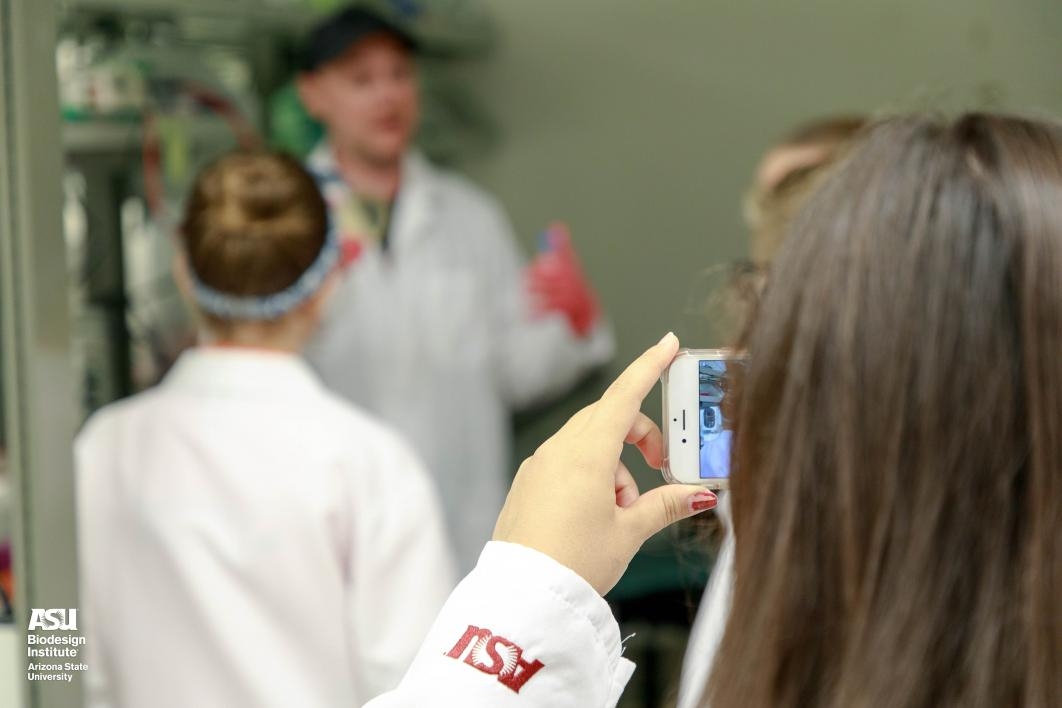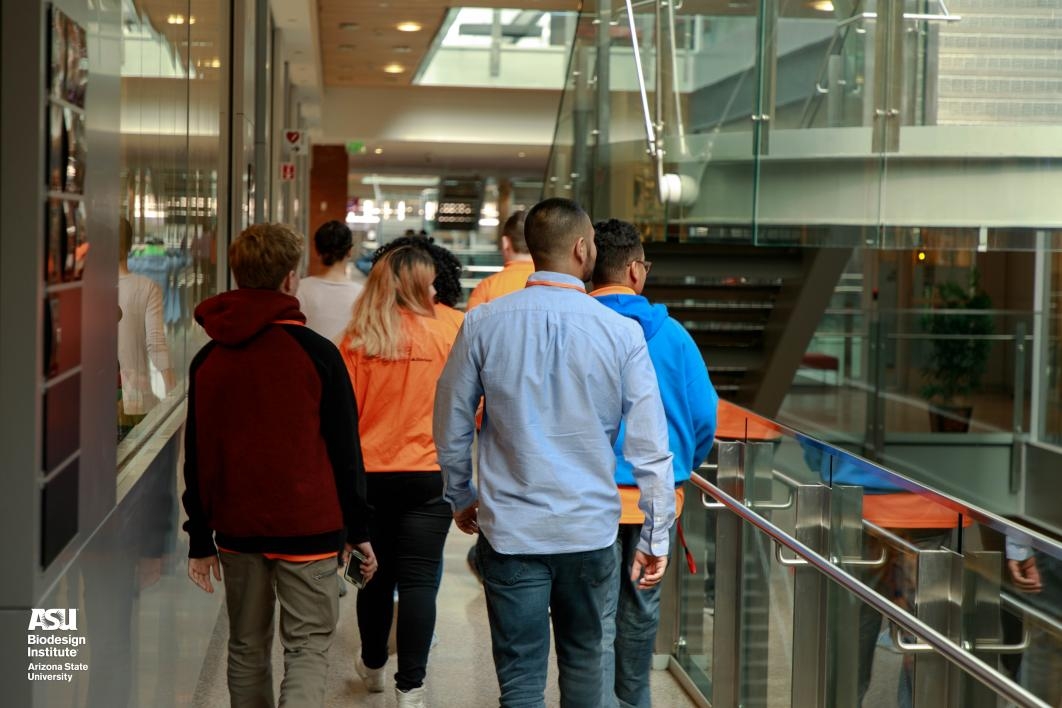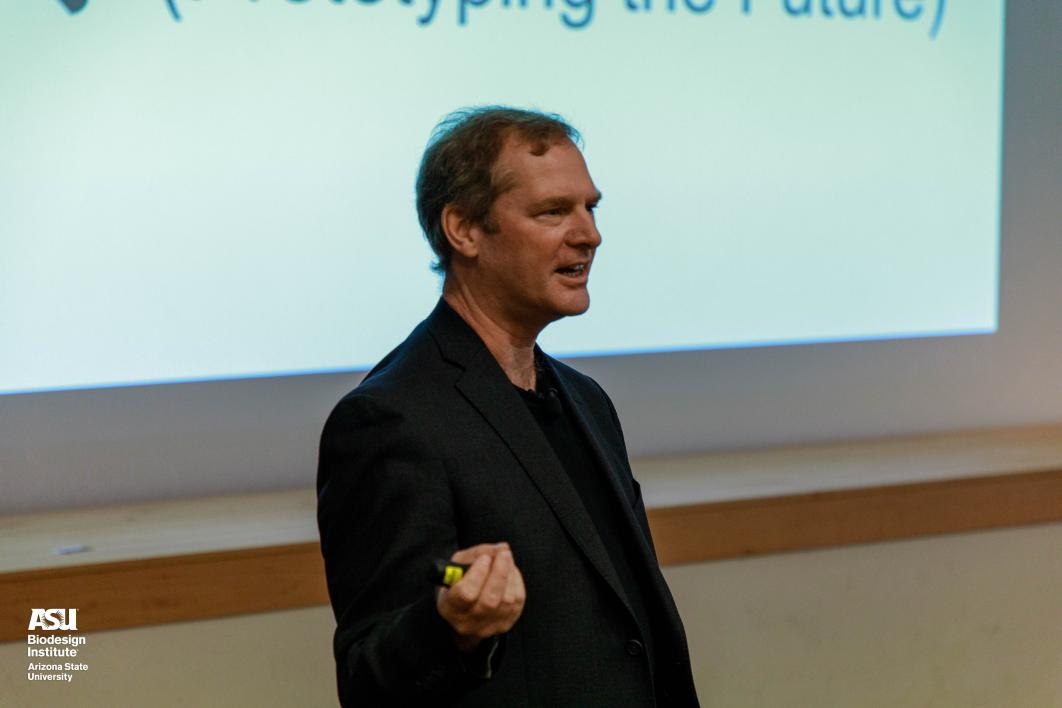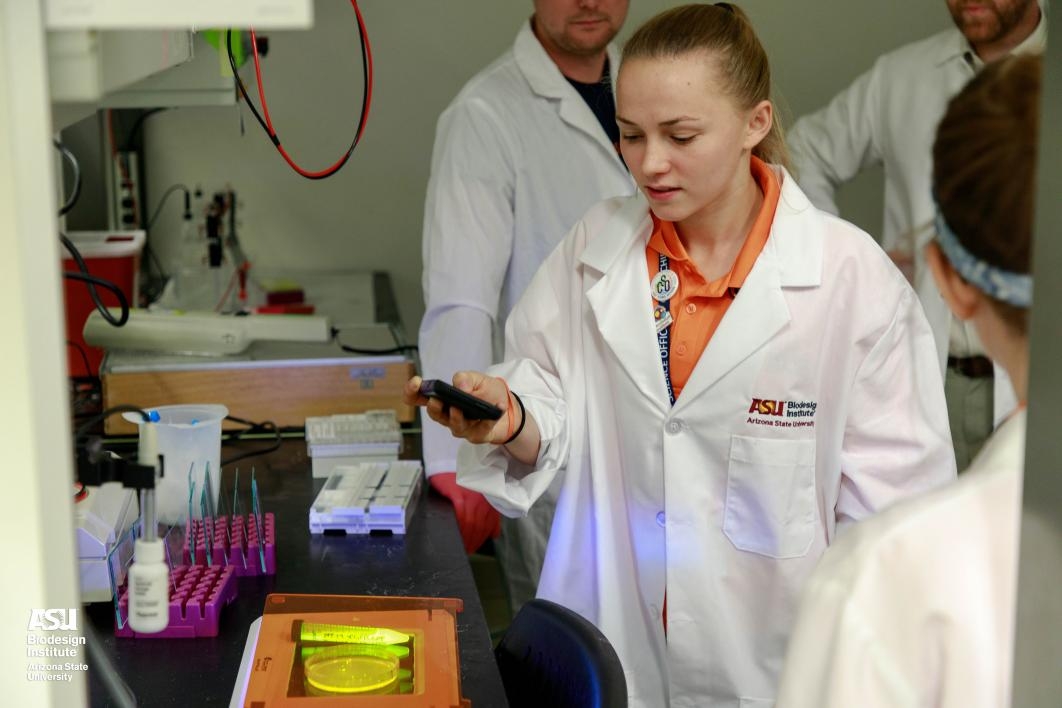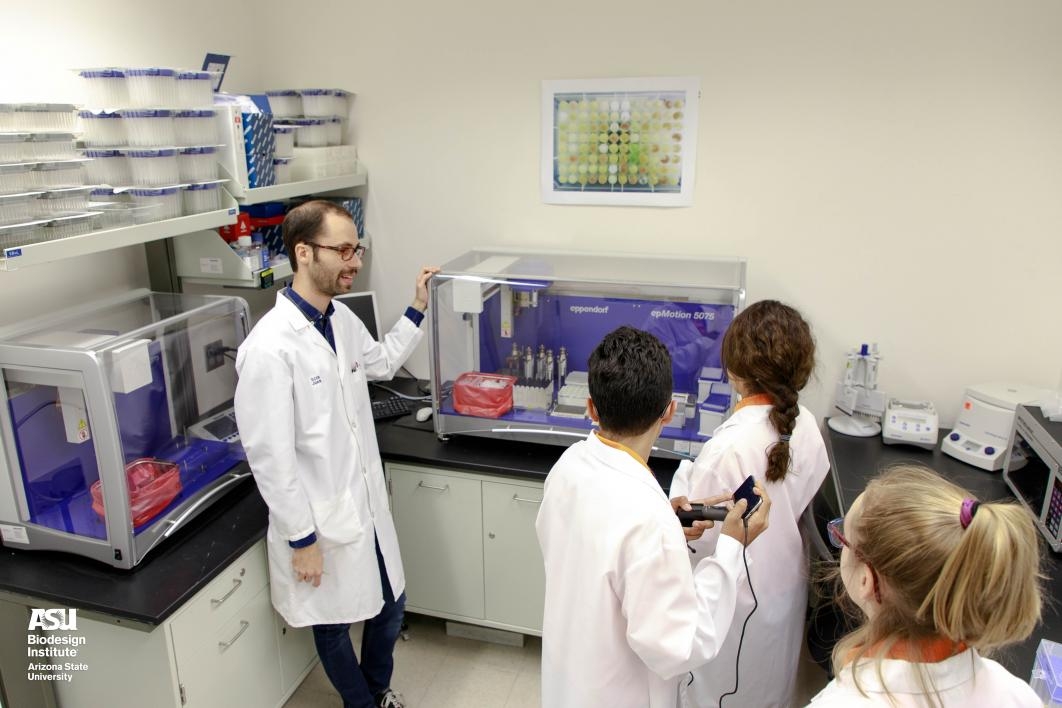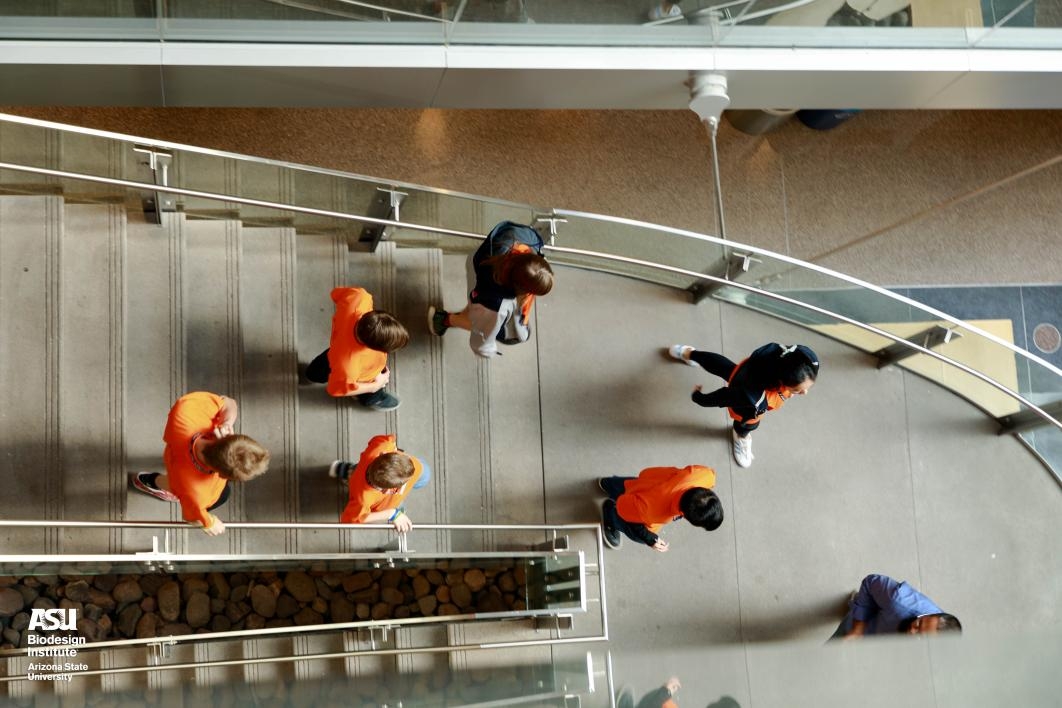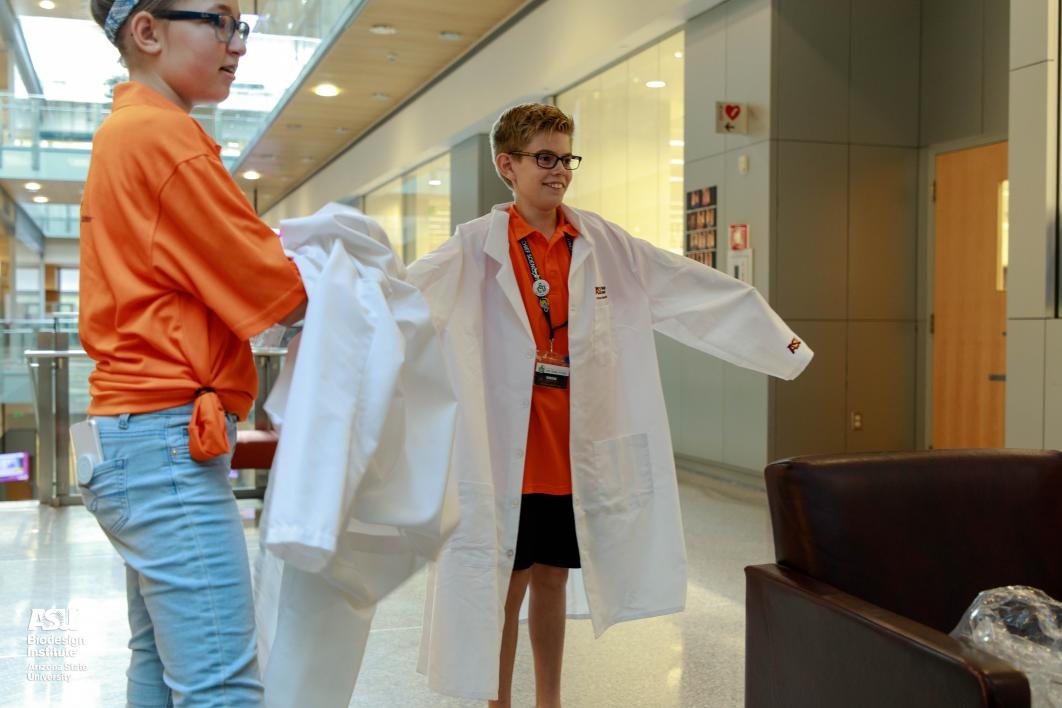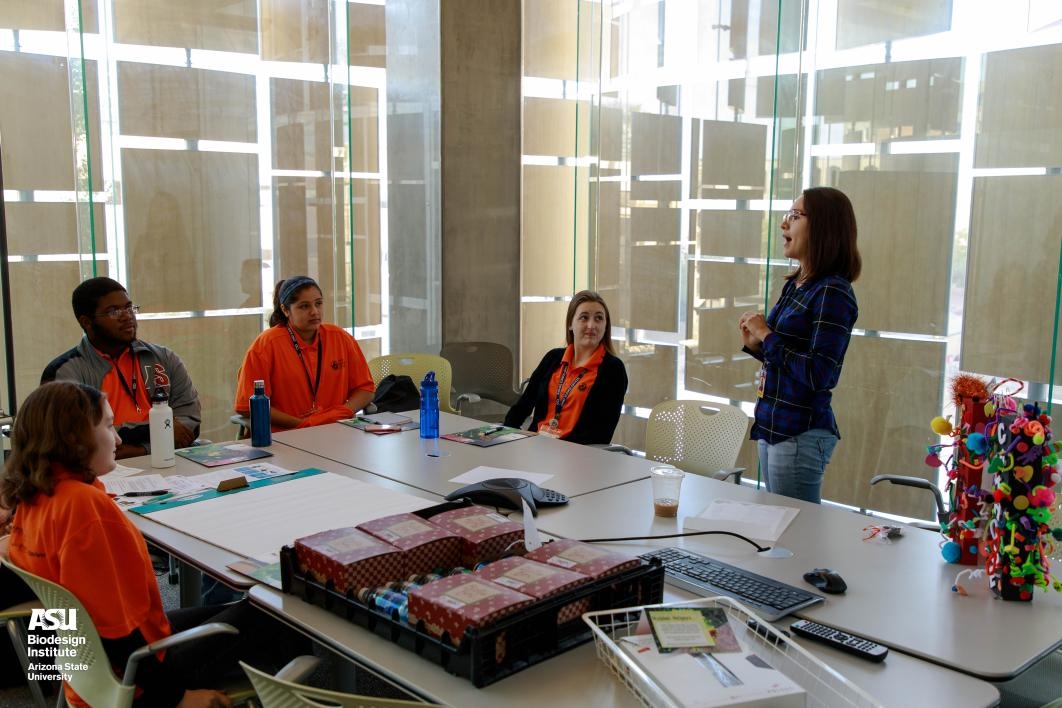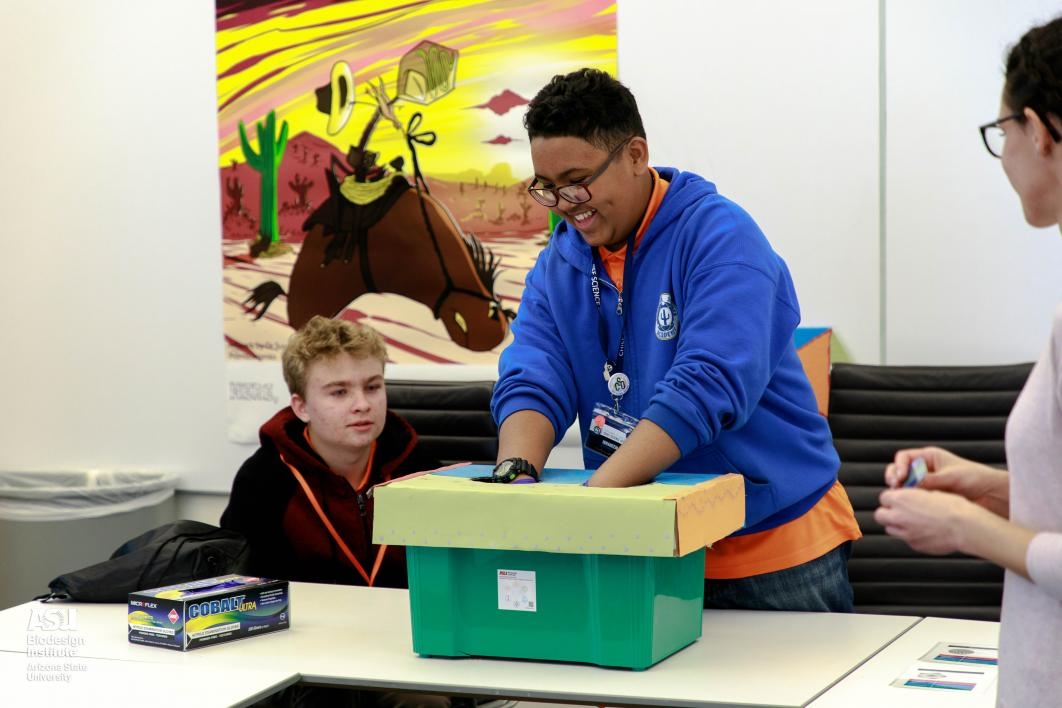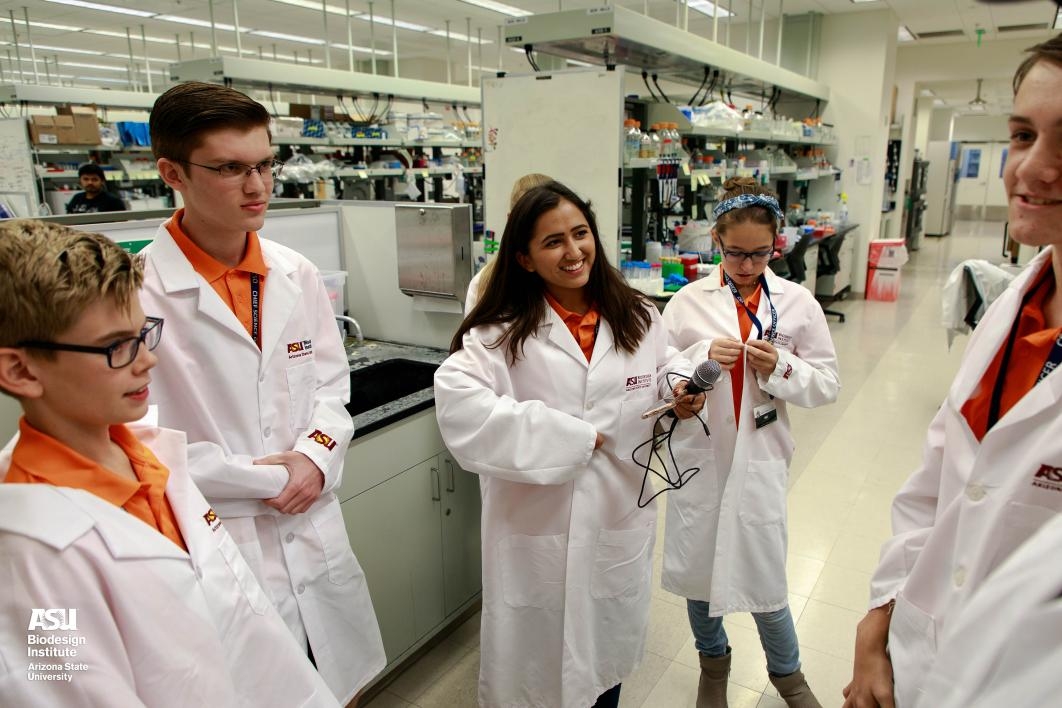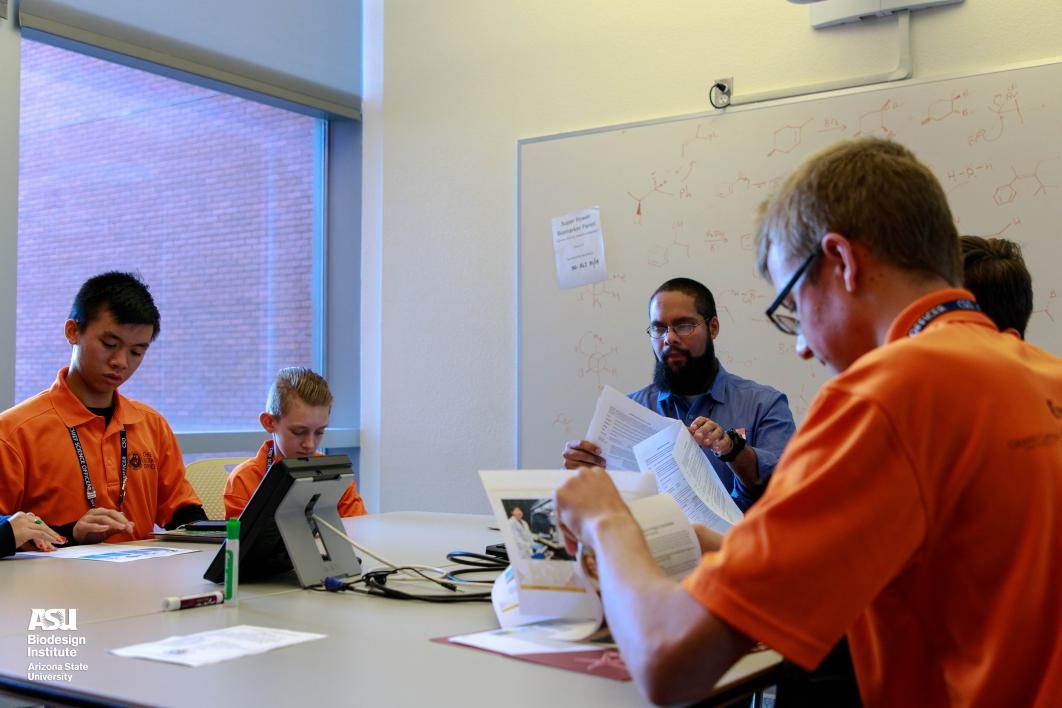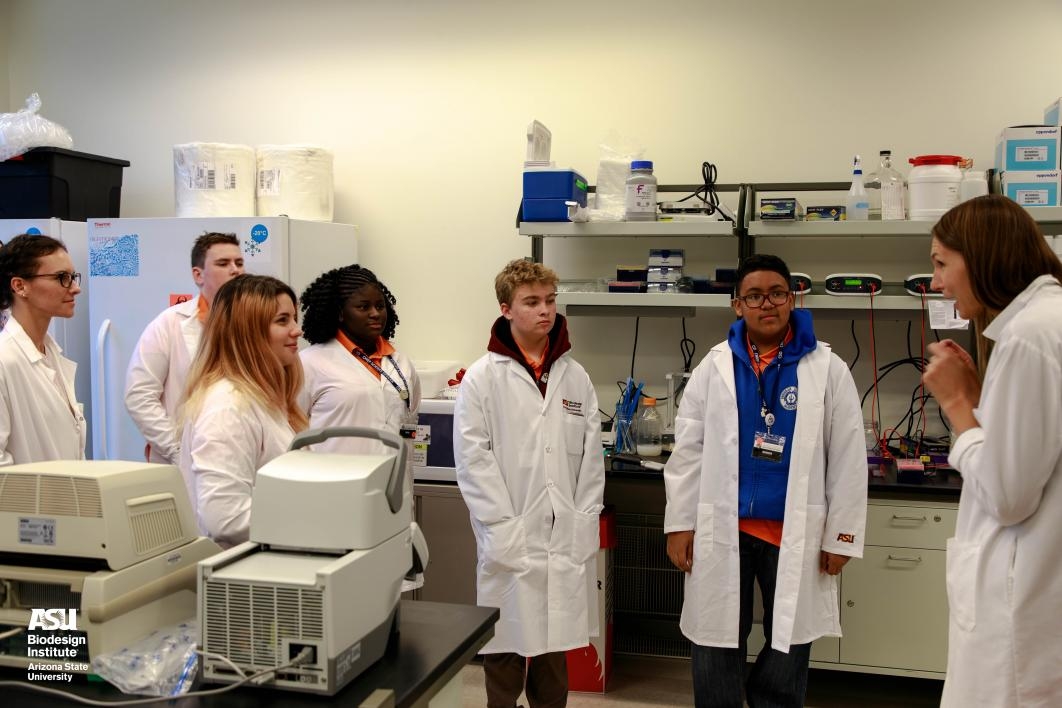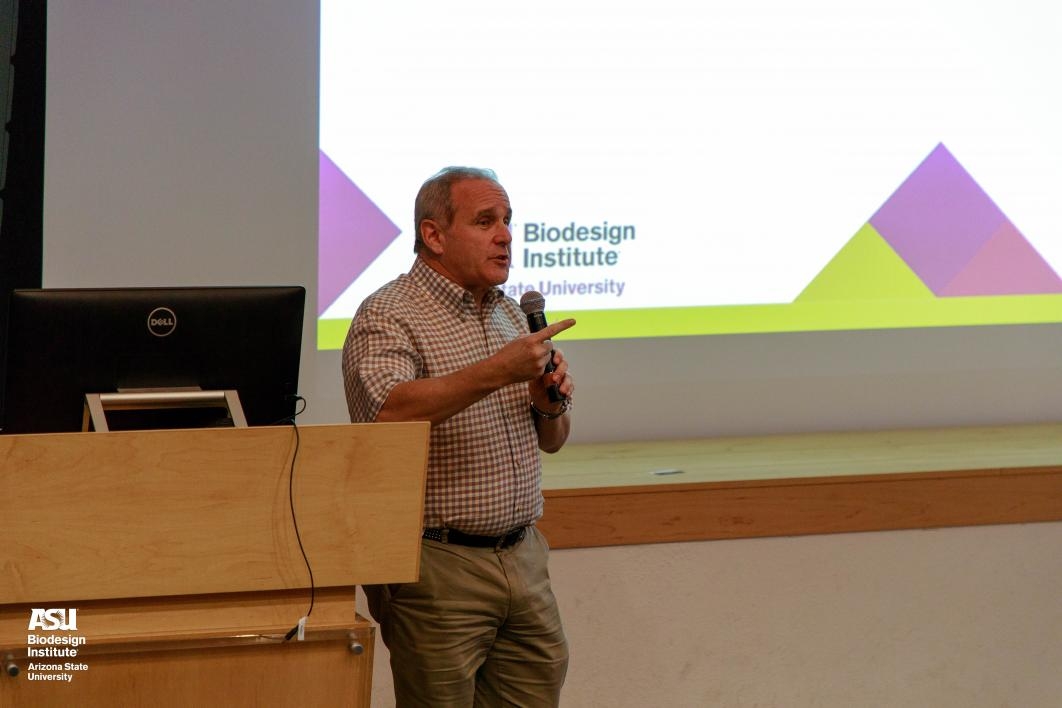Biodesign Institute opens labs to Arizona’s Chief Science Officer students for one-of-a-kind event
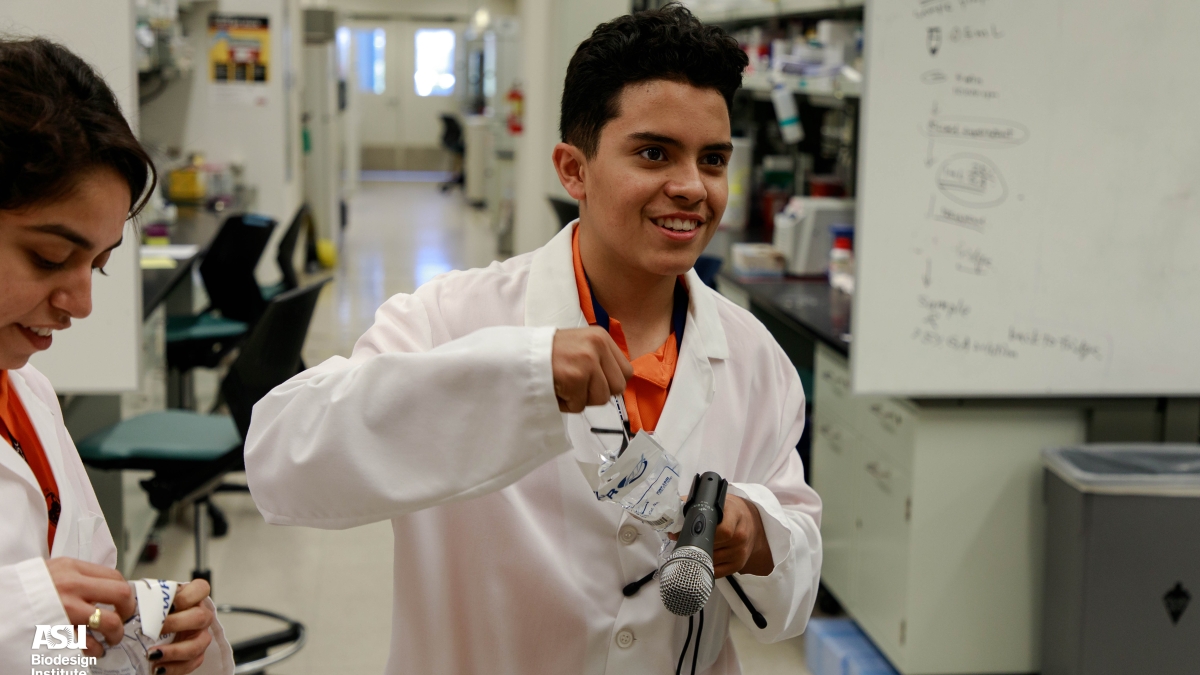
Arizona's Chief Science Officers, all sixth- to 12th-grade students, visited the Biodesign Institute on Nov. 28.
Nearly 60 middle and high school students spent a special day meeting with scientific mentors and touring the state-of-the-art research laboratories up close at the Biodesign Institute at Arizona State University on Nov. 28.
The students are part of Arizona’s Chief Science Officers (CSO) program, elected by their peers at school to serve as advocates for Science, Technology, Engineering and Math (STEM) education. The CSO movement aims to get more young people interested and involved in science.
Joshua LaBaer, executive director of the Biodesign Institute, kicked off the day’s activities with a warm welcome for the eager students.
“You guys got elected to be the Chief Science Officers, so you’re recognizable as science geeks and that’s something that here at Biodesign, we’re quite proud of. Everybody here really enjoys the fact that science excites them,” LaBaer said.
They came to Biodesign from all over the state, breaking into 10 teams and taking over the Institute’s auditorium and all of its conference rooms for the day. Each team was paired with one of 10 Biodesign scientists, who introduced the students to their area of expertise and gave a guided tour of their labs.
“This is really the first time something like this has been done with Chief Science Officers, so we really wanted to acknowledge having this event here,” said Jeremy Babendure, director of the Arizona Science and Technology Festival and a professor at ASU’s School of Molecular Sciences. “This event is absolutely amazing. It is near and dear to my heart.”
And for some students, the amazing science they witnessed firsthand—from cancer-fighting viruses to renewable biofuels to combating the global threat of infectious disease—may have even been career-inspiring.
Vincent Buquicchio, a student and Chief Science Officer from Youngker High School in Buckeye, Arizona, said, “I’m really thankful to the Biodesign team for opening up their doors and letting us CSOs explore the science and what it has to offer for us in the future, and it might help us in what we want to do in the rest of our lives.”
Learning to communicate science
As science ambassadors, one critical objective was to challenge the CSO students with how to better communicate science, whether it be to their peers, parents, teachers or the general public.
“One thing that we truly believe in is, how do we communicate what we do, about our passions in science, to the public?” said Babendure. “And how awesome is it to have a world leader working with you to be able to translate that, and make it something that can enthrall your friends and your parents and your communities?”
Andrew Maynard, a professor at ASU’s School for the Future of Innovation in Society and director of the Risk Innovation Lab, helped design the day’s curriculum in collaboration with Biodesign staff and led a science communication workshop for the students.
“There is nothing better than sitting down with somebody who does really cool stuff, whether it’s dealing with plastic in the ocean or protein folding,” said Maynard.
The Chief Science Officers were asked to come up with a video making their scientist mentor’s area of research relevant to their peers. Maynard asked them to consider their audience, tell a compelling story and showed them a few tricks of the trade to filming a good video.
“Science is incredibly empowering,” Maynard said. “Not only what you can do with it, but just how it helps you see the world. I think it’s tremendously important that young students get the opportunity to see just how eye-opening it is when you learn about how the world works.”
Fostering a movement
For the scientific mentors, it was a day well-spent to inspire the next generation of young and curious scientific minds.
“Today was an awesome opportunity for the kids to come in and look at what scientists do daily, and also how scientists think," said Marc Tollis, a postdoctoral researcher at the Biodesign Institute. "They learned a lot about how to communicate ideas, which is just an important as actually doing the research itself.”
The Chief Science Officer program launched in Arizona in 2015, and has expanded to 120 schools this year and attracted the attention of Arizona Governor Doug Ducey. Through the CSO program, sixth- to 12th-grade students are elected by their classmates to serve as STEM liaisons for their community and private industry.
“In the Chief Science Officer movement, Arizona is the leader out of all the states in the country, so this is something we should be proud of,” said LaBaer.
This special event was generously sponsored by the Robert E. Schneider Foundation.
More Science and technology

Science meets play: ASU researcher makes developmental science hands-on for families
On a Friday morning at the Edna Vihel Arts Center in Tempe, toddlers dip paint brushes into bright colors, decorating paper…

ASU water polo player defends the goal — and our data
Marie Rudasics is the last line of defense.Six players advance across the pool with a single objective in mind: making sure that…

Diagnosing data corruption
You are in your doctor’s office for your annual physical and you notice the change. This year, your doctor no longer has your…


